Stop Messing Up Your Growth Leader Hiring
Why so many founders get this wrong and what to do about it
Hi there, it’s Adam. I started this newsletter to provide a no-bullshit, guided approach to solving some of the hardest problems for people and companies. That includes Growth, Product, and company building. Subscribe and never miss an issue. If you’re a parent or parenting-curious I’ve got a podcast on fatherhood and startups - check out Startup Dad. Questions you’d like to see me answer? Ask them here.
Q: When is the right time to hire a Growth leader and how does what you need change over time?
I’ve written about this a bit along with my pal Elena via Lenny’s Newsletter (here and here). We also talk about hiring archetypes in our Growth Leadership program.
So why does the question above keep coming up over and over and over again?
I’ll tell you why:
People keep F-ing it up. CEOs, founders, investors. All of ‘em.
Hiring a Growth leader is one of the most pivotal steps in a startup’s evolution and if 40-50% of all newly hired executives depart within ~18 months then the failure rate for Growth leaders is even higher.
This very high failure rate is some combination of these variables:
Timing
Expertise
Expecting miracles
Organizational alignment
Your product sucks (see also: timing)
In this newsletter I’ll examine:
Funding stage - how stage dictates whether, when and how to hire
Growth leadership by stage - the evolving needs and competencies needed
Missteps to avoid - common pitfalls and how to dodge them
Pre-Seed & Seed Stage
Focus: Founder-led growth
I realize that every new AI startup is raising massive pre-seed and seed-stage deals, going from $0 to $1 gazillion in ARR in 2 months, and they all have growth curves that look like vertical lines. Maybe those companies can hire for growth… but everyone else, nope.
At this stage most companies have launched or are about to launch a product and they’re chasing that elusive first* product/market fit. Even if you have some early users and a small revenue stream that doesn’t mean it’s time to step on the gas.
*Note: I say ‘first’ PMF because we’re seeing AI accelerate product/market fit collapse so many companies are going to have to re-build and find PMF again.
Almost every founder I talk to has made missteps when trying to hire a Growth person at this stage. And it’s primarily because they shouldn’t be hiring them at all.
Trying to scale at this stage is like strapping a jetpack to a unicycle.
Your results may vary, but they’ll probably look like the above.
Growth is all about connecting more users to something that’s already working and at this stage you’re not there yet. You’re also very likely to be lacking any true, quantitative data which renders many of the tools in the Growth leader’s toolkit ineffective.
So what should you do instead?
Put the founders in charge of any growth efforts.
This is effective because at the pre-seed and seed stage getting to product/market fit is the #1 thing you can do to unlock your early growth potential. And founders should also be in charge of PMF.
Founder-led growth works well at this stage for three primary reasons:
The first is that early-stage traction (and PMF) is all about feedback. You’re putting your product and messaging in front of potential customers, seeing how they react to it, and then applying that feedback as fast as possible to make the product (and messaging) better. There is no one better positioned to do this than the founding team.
A second reason this works well is because founders iterating towards PMF are changing the product every week and have the opportunity to define and build the foundations of their growth loop(s) into the core product.
The third reason is that founders who figure out their growth motions and early growth model are better positioned to make the right hire as they scale. “How do you grow, today?” is the first question I ask founders at this stage. If they don’t know, then how will they know the right skillset and expertise to look for in a leader?
But Adam, if the founder(s) is/are in charge at this stage then what should their growth priorities be?
I’m so glad you asked; there are two:
Laying groundwork for growth through instrumentation and data collection.
Figuring out your growth motion and a rough/simple growth model.
Outside of those two things, nothing else matters at this stage.
Series A
Focus: Continue founder-led; make first dedicated growth hire
If you’ve survived (thrived?) to this next stage a hearty congratulations is in order. Depending on which random internet statistics site you look at, the failure rate in getting to this stage is as high as 90% of all companies. You’re now past the jetpack and unicycle stage and are close to (if not at) PMF.
I say ‘close to’ because there are still quite a few companies that will pivot after Series A – including one of the hallmarks of my career, Zimride (which we turned into Lyft after I joined).
You’ve got more users than you did at Seed stage and that means a real possibility that you’re making quite a bit more revenue. This is where your board and investors might start yelling about scaling and they’re clamoring to introduce you to all the Growth people they know. This is exciting, but tread lightly.
Assuming you have achieved PMF and really know people want what you’re selling, the misstep you’re most likely to make at this stage is hiring the wrong first Growth leader. When I talk to Series A companies what I typically hear is, “We hired X person as our Head of Growth and it didn’t work out.”
I recommend pausing to read this and this, then coming back here. Go on, I’ll wait.
As I mention in those other two articles, you need to hire a hands-on architect or builder as your first leader. Within the competency framework, this person should spike on the right side of the growth competency model: execution and customer knowledge.
Because you’ve done the pre-seed or seed-stage work of figuring out your growth motion you’ll also know whether you need a person who is more marketing, product, or sales-forward in their skill set.
My personal bias here is someone who is more product-oriented and there are four primary reasons for this:
They’re going to be setting up an experimentation process.
They’ll be building on the initial loops you uncovered in your prior stage; especially habit loops for retention.
They’re more likely to be adept at querying data and turning it into insight.
I find product folks to be slightly more malleable than marketing or sales* (i.e. you’re more likely to find the profile you’re looking for with a product person).
*Before my marketing and sales friends come at me with torches and pitchforks: yes, there are exceptions to this rule typically rooted in growth motion, but I’ve seen it go wrong more often than right when you start with a non-product person.
The priorities of your Series A Growth leader are pretty straightforward. Since they’re architecting your growth engine and building it themselves their focus is on diagnosing, experimenting, shipping and sharing. That’s it.
At this stage you should watch out for two big things:
The ‘celebrity’ Growth leader
The acquisition-only leader
Your celebrity leader will come highly recommended by the board and investors, but they’re better as an advisor helping your builder rather than doing it themselves. It’s likely they haven’t worked at this stage in awhile (if ever) and they wouldn't know what to do without big dollars, big teams, or both. Be wary.
The acquisition-only leader is an expensive, one-trick pony. They know all the ways to get someone in the door, but not much about how to keep them there. This is a risky proposition at Series A because a lot of the work will continue to be focused on retention (another reason to start with a product-focused leader).
Series B
Focus: Moving from single Growth practitioner to small team
Now that you’ve survived the pre-seed, seed and Series A gauntlet you should have a few things sorted out:
You know who your core customers are
They care enough about your product to keep using it
You’ve got metrics that show growing customer numbers, healthy retention, and revenue
You’ve adjusted your growth model based on what you’ve been learning the last ~12-24 months
Investors are ready to go bigger and faster which means more money, more people, and more growth decisions to make.
It may surprise you to learn that growth doesn’t occur magically once you add more people. When I joined Patreon right around their Series B they had previously had a growth team and shut it down. We restarted it and proceeded to grow 10x in the next few years.
At a Series B stage you start expanding your team. Sometimes that means bringing in a new leader (me at Patreon) and sometimes that means promoting someone from within (me at Lyft) and hiring specialists around them.
Whether you’ll need to bring in a new person often depends on if you need a fresh perspective on growth (Patreon) or if you need to accelerate what you’ve already figured out is working (Lyft). Regardless, when you hit Series B you’re facing increasingly complex and diversified growth challenges. The single architect/builder profile isn’t enough if you want to go really deep in several areas, maintain multiple experiment backlogs, and take a lot more shots on goal… er… test more hypotheses.
There are two directions you can take here:
Bring in the visionary to evolve your growth model. (Innovator)
Pull a lot of growth levers. (Optimizer)
In the Reforge Growth Leadership program we outline these directions in a simple decision-tree.
If your model is well validated and you know exactly which areas to spend time on you want to expand the team with optimizers. These are specialists who can turn insights from one channel or area into hundreds of new hypotheses. On the flip side, if what you've tried to date hasn’t worked at all or you’re approaching a performance ceiling with one or more growth loops then you might seek out a visionary innovator to help evolve the overall growth model hypothesis.
The rest of the company is probably expanding as well. If you’re a B2B company you might be layering in a sales assisted or direct sales motion as you move up market or you may be looking to expand monetization through new feature development (which comes with product-led upsells).
Assume that what got you to this point won’t get you to the next one especially because it’s very likely that in the later stages of your Series B journey is when you’ll add a new growth motion. Thanks to the magic of AI and the distant memory of the ZIRP era I wouldn’t expect you to need (or be able) to add dozens of people to the team.
Here are a few questions that can inform what you need:
Do you have the right org structure?
Can your builder level up to be a true leader?
How are our growth loops performing and are we reaching their limits?
For organizational design you can centralize or decentralize, embed in product or marketing, or create and maintain a standalone team. Unless your growth motion is heavily dependent on marketing I would advocate for centralized standalone or centralized and embedded in product.
Leveling up to be a growth leader at this next stage depends on evaluating the left side of the competency model which is focused on strategy, communication and influence. Oftentimes founders will rush to hire an outside person because it seems like a quick fix or the board recommends someone when the best candidate with the most context is sitting inside the building already.
The final question–how are our growth loops performing–helps you determine whether you can squeeze more juice out of the growth orange or it’s time to evaluate alternate methods or loops.
As you’re navigating the Series B stage you want to avoid these missteps:
Scaling new hires too fast - dial in your operating processes first or you’ll end up with overlapping responsibilities, fuzzy goals and slower execution at a time when you want to go faster.
Retention rate slipping - I know you want to acquire allllll the users. But as you start to expand your audience your retention rates will decline. Unless you work to maintain them, costs will increase and LTV will decrease.
Over-focus on a single loop or channel - while it's risky to try to add multiple new loops at the same time, you do want to hedge against diminishing returns. I recommend simultaneously always exploring 1-2 new loops while optimizing your current ones so you’re not caught unaware.
Series C and Beyond
Focus: Growth leadership at scale
You’ve demonstrated that your product can scale, have multiple growth motions running and you’ve grown a small, specialized Growth team into a few focused teams. The pressure to grow and keep that curve angling upward is even more intense and it’s harder than ever. You’re past the point where growth is a function and now you should be thinking about it as an organizational capability.
If your Series B stage was about validating some new loops and optimizing those from Series A then this stage requires you to continue layering on new ones to avoid a plateau. You’ll also have product teams busy adding new product lines which could require a nuanced growth approach or new team.
The key decision point here is centralized or decentralized and if you have multiple product lines, want to build organizational capability, and disseminate knowledge across the organization you’re probably going to decentralize. The tradeoff and risk is speed and cross-functional conflict which can suffocate the culture of experimentation you’ve worked so hard to build.
There are two main ways to avoid this risk:
Create structured experimentation processes, like a weekly experiment review, but resist excessive reviews and signoffs by leveraging…
Shared goals and metrics. If you’re aligned on outcomes and responsibilities for each growth team or squad then you can minimize the number of people involved in decision making.
For leadership this will also depend on centralized vs. decentralized. If you keep a centralized structure then you need a leader who can oversee a multi-team organization. This means you really need someone who is strong at the left side of the growth competency model and specifically on unifying strategy, budgeting and forecasting, and smoothing out any cross-org tensions that might emerge. If you decentralize a single leader matters less, but remember that the coordination overhead of multiple leaders will increase.
Bringing It All Together: Summary and Key Takeaways
While there’s no one-size-fits-all Head of Growth role this newsletter lays out some important considerations for who you might want to hire at each funding stage. I routinely see companies get this wrong through some combination of product readiness, timing, organizational alignment and incorrect expertise.
Following a funding-stage model can give you a good rubric for what you need and when. Here’s a summary, by stage, recapped in a handy dandy table that you can print out and post on your wall:
See you in your inbox next week!
For further reading on this topic you can take a look at some of the articles I’ve linked throughout and a few additional ones:
How to Hire your First Growth Team (Elena Verna + Andrea Wang))
Six Rules of Hiring for Growth (Elena Verna)
Growth Leadership (Elena Verna + Adam Fishman, that’s me!)
Hiring for Growth - 3 parts (me)
Starting and Scaling a Growth Team (Casey Winters)


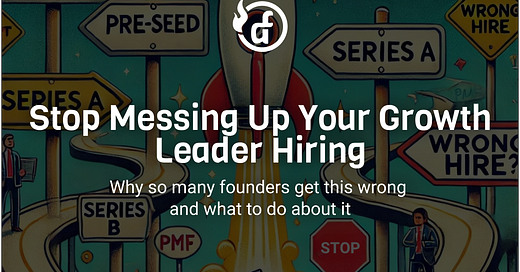




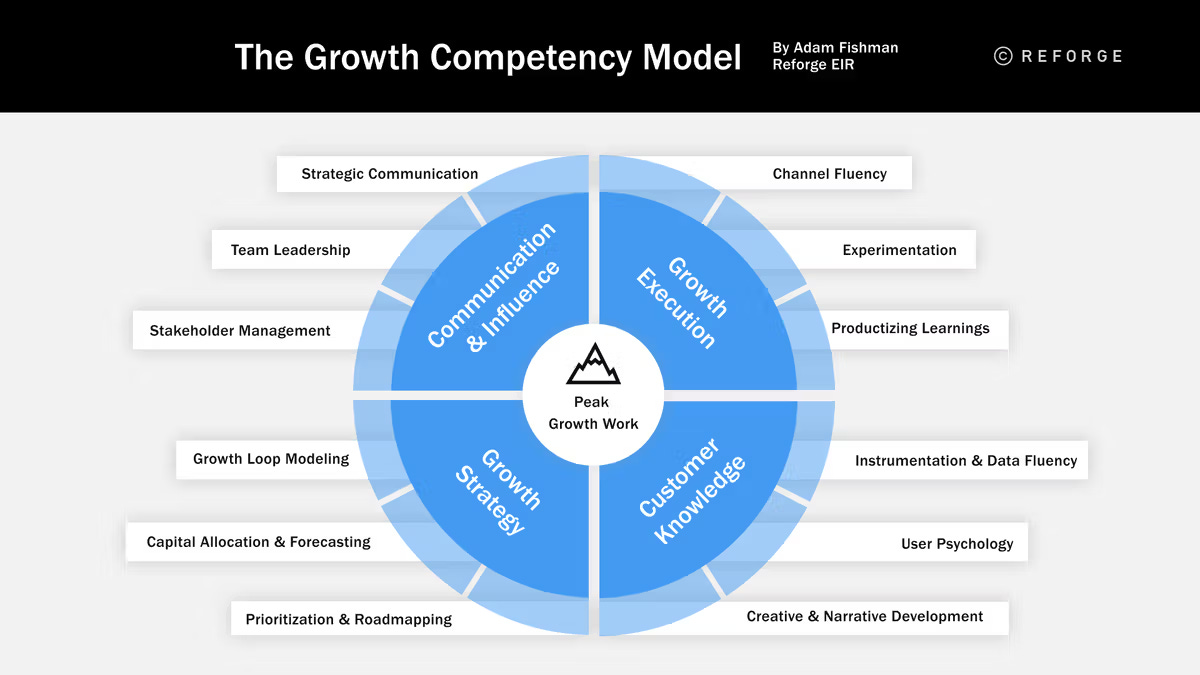
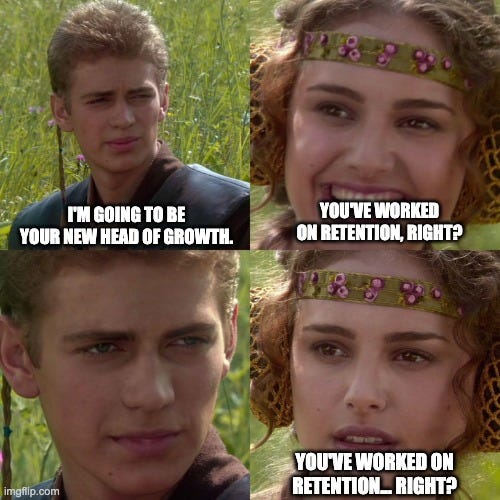

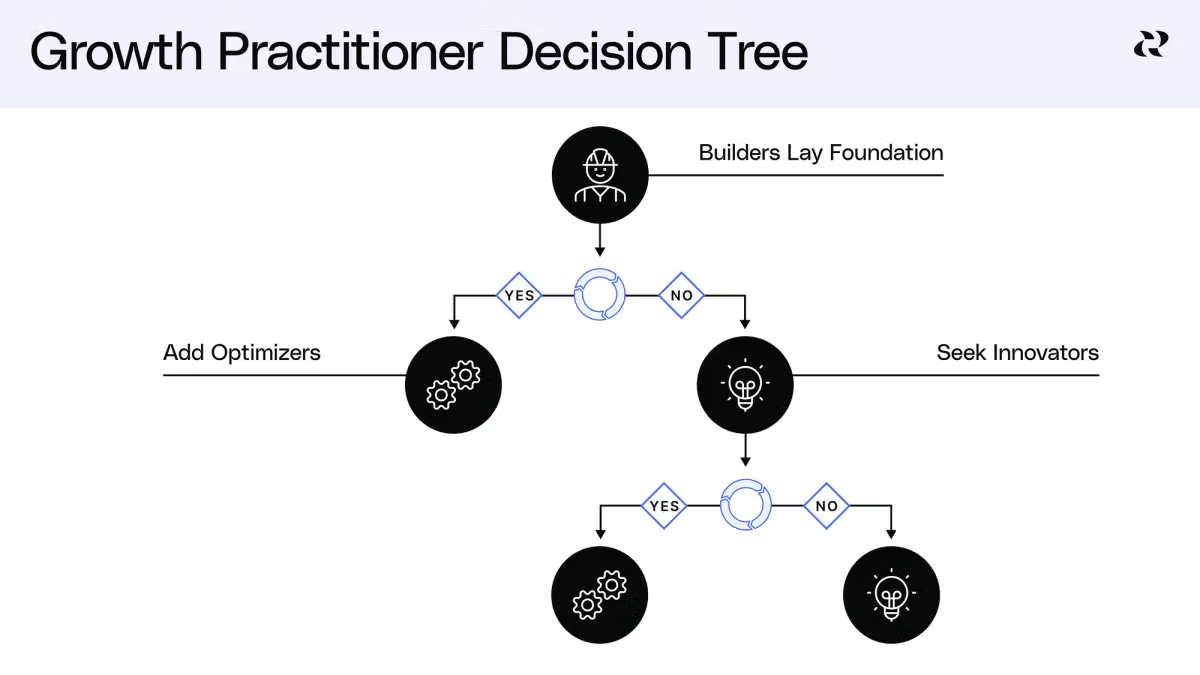
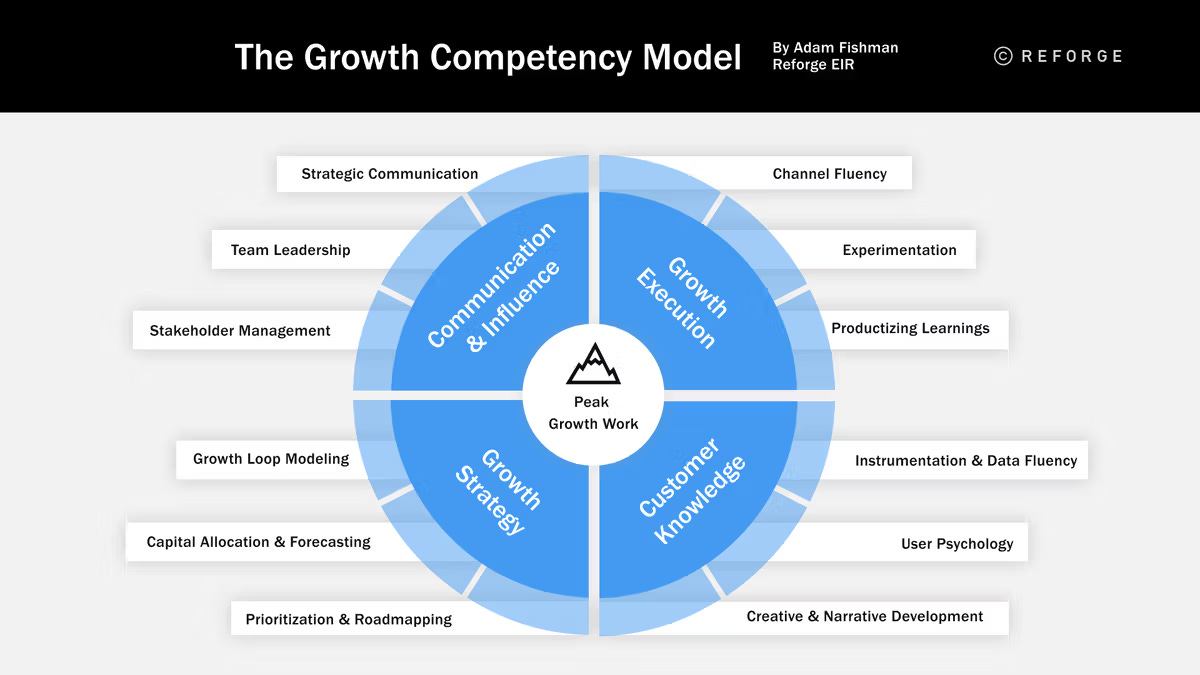
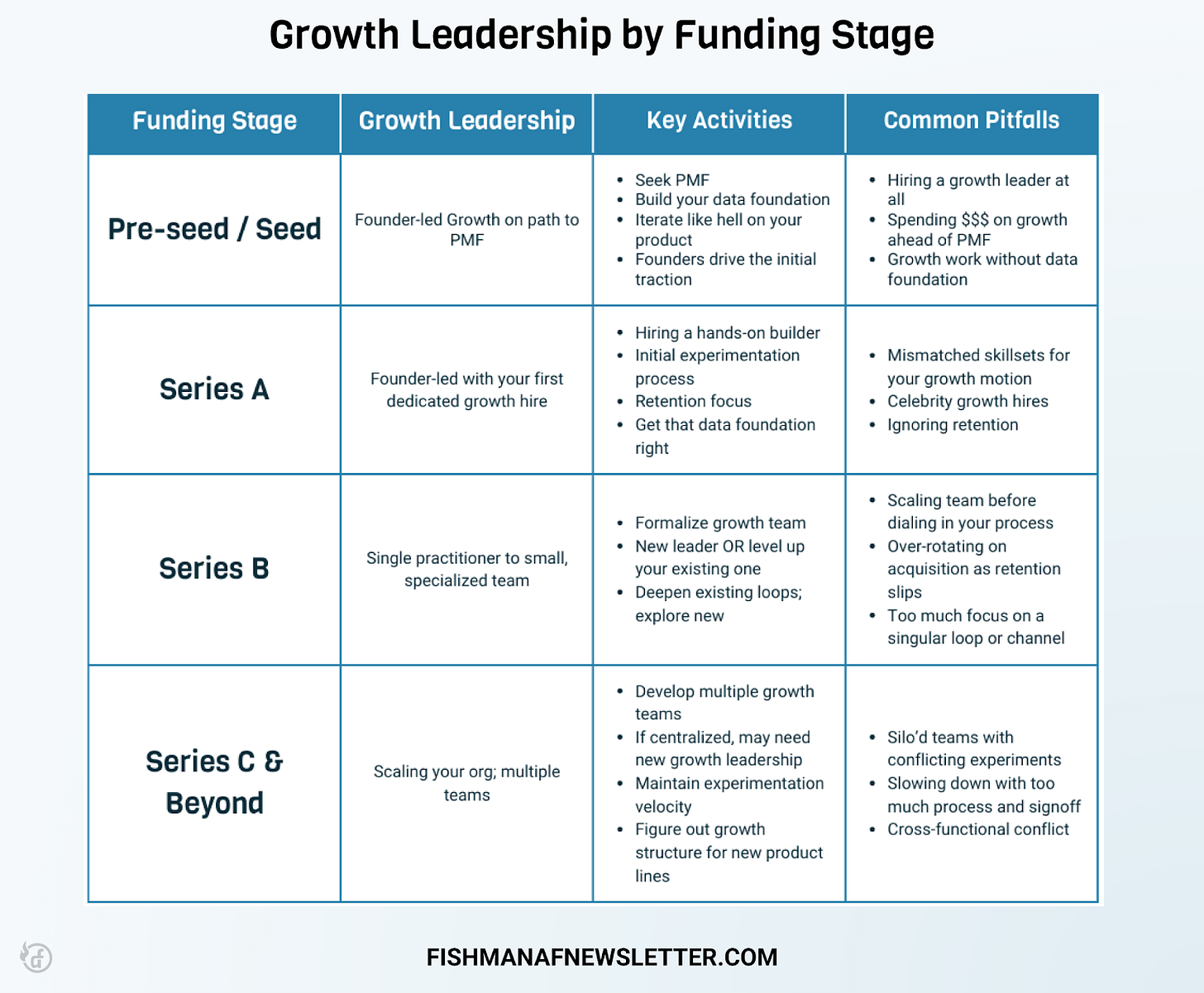
Nailed it!